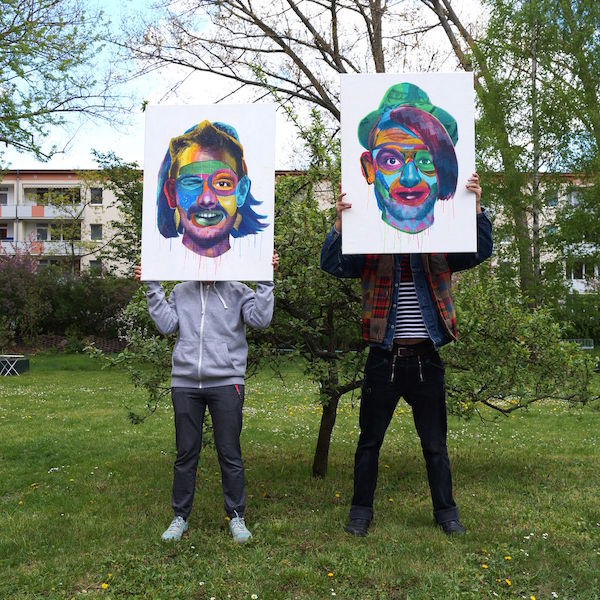As a child, I always wondered what it would be like to be an adult.
And as an adult, I wish that I could go back to being a child. The inevitable truth of life is that we cannot escape death and, though we age, there are so many ways in which we are still children.
We are restless souls traveling between the fine lines of light and shadow, joy and grief, past and future—all moving toward the collective goal of personal truth.
Physical growth is inevitable. Our bodies follow the predictable path of childhood, youth, old age and eventual decay. Yet in a society that values the external above the internal, the needs and personal growth of our inner child are often ignored. The infant inside is abandoned and discarded, as our attention is focused on the material world and the present stage of life we find ourselves in.
Then something major happens in our life, shaking our foundations to the core. It creates and triggers unresolved trauma and we feel completely unequipped to deal with the resulting emotional upheaval. This is a call from our soul to awaken, and we can choose to either follow the path of spiritual growth or try to ignore it.
Even if we deny the importance of soul growth, it will always call to us, a distant echo from the books we read, the people we meet, and the places we visit. We find it in synchronicity—in certain signs and symbols. We feel it in the thudding and racing of our beating hearts, in the things that excite and inspire us. We experience it in a certain physical sensations or a rush of scattered thoughts, scrambling to connect patterns that are relaying messages from our subconscious.
Our inner child is shaken awake time and again, and we try to solve this problem by self-medicating or finding other ways to avoid it. However, the anxieties and frustrations always relapse because we are not facing the root cause within.
The more our inner child and adult bodies are in sync, the more balanced and harmonious we will be.
Have you watched healthy, grounded and centered children in their natural state? They are playful, free, observant, innocent, happy and sad. They do not cling to any emotion, or attach to any person, because their egos are as of yet undeveloped.
As we mature into adults, besides the transformation of our physical bodies, we must also nurture our inner child to grow simultaneously. Our inner infant stores our childhood traumas and behaviors, both conditioned and learned. As we grow older, we still experience the broad range of our emotions, but are often unable to manifest them in a healthy manner.
Based on the messages we have received from our personal upbringing, we suppress and deny everything that is considered undesirable in us, and in others. Men may suppress shame and guilt from emotional vulnerability, and women may suppress the expression of anger and aggression.
By denying the negative emotions that are stored inside, we are also denying our positive emotions. The truth is that we cannot feel pain without pleasure or love without hate. We have to embrace the dualities and extremities of life to be able experience it fully. Our inner child keeps our worst fears and nastiest scars, but it also holds the secret to tremendous potential of creativity, happiness and personal wellbeing.
The keys to unlocking this treasure trove that is already within us are empathy and compassion. To cultivate these, we must become more aware of our minds and bodies. Our inner child is constantly responding to our past, collective history, the current environment, the speculations of future potential, the people around us, the city or country we live in, and the current state of affairs.
Emotions are contagious, and our subconscious has a hard time differentiating between those of our own and others. They manifest as physical sensations in our body, and create more thoughts and feelings.
An easy way to escape this cycle of action and reaction is to allow ourselves to fully experience the sensation of the emotion, rather than acting on it. Being mindful of our thoughts helps us to observe and notice the chain reaction.
Awareness does for your body what knowledge does for your mind. It frees it from ignorance. Accept that this feeling or thought is temporary and let it pass. Start by focusing on your breath at the tip of the nose, and slowly move the focal point to include your entire body. Simple attention changes transmute our energy, such that certain thoughts no longer have power over us.
We must simply face the truth and allow ourselves to feel everything. This will help us to heal not only ourselves, but also others.
Pacify your child, and show him or her that these emotions are manageable if handled in the right manner. Observe the thoughts that pass through your mind and the sensations that rise and fall in your physical body, without any attachment. This may sound easy in theory, but it’s so much harder in practice. We are so tied to pain and pleasure that we cannot help but judge a thought or emotion. Do not be angry or impatient with yourself for this. This is natural. The only thing you need to do is be aware.
Life gives us so many opportunities—guised as uncontrollable circumstances and events—to help us become accustomed to uncertainty and unpredictability, let go of unhealthy attachments, and work on our personal and collective development.
It is up to us how we translate these opportunities into our highest potential as authentic and fully realized human beings, who honor and nurture our inner children.
Author: Nikita Mor
Image: Wikimedia
Editor: Callie Rushton











Read 0 comments and reply